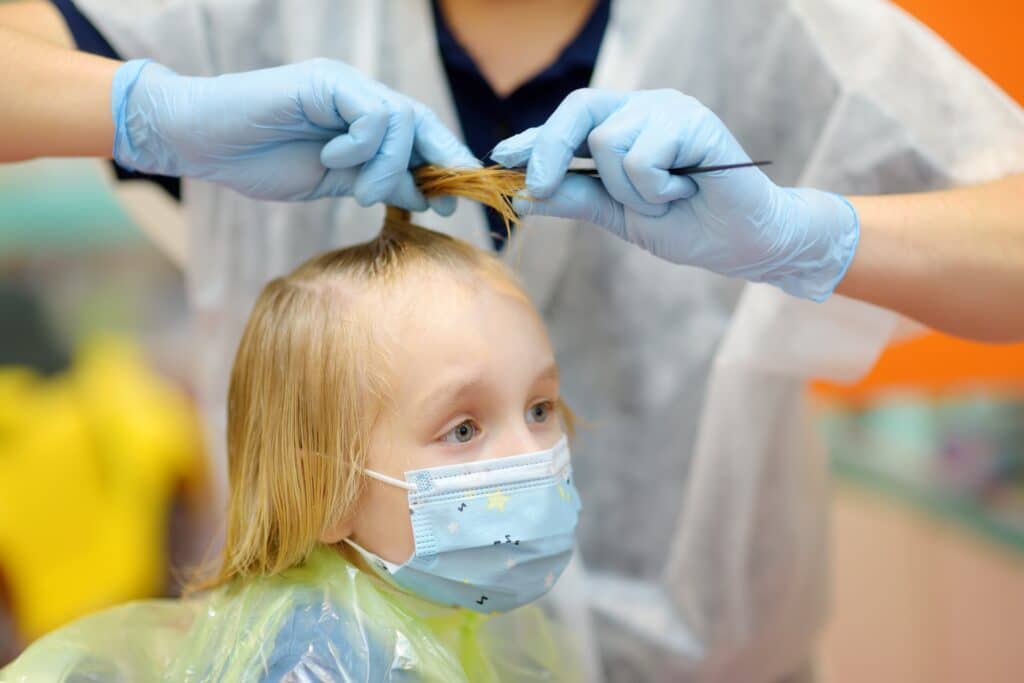
Lice and dandruff are two afflictions that are common in both the US and around the world - indeed, chances are that you or someone close to you has already experienced one or the other at some point. In addition to being very common, lice and dandruff will cause very similar symptoms, making it easy for one to be confused for the other.
Given how common they are in the general populace, it’s important to be able to clearly identify which is which. This is because, even though they share very similar symptoms, the two conditions are very different in terms of their root causes and their treatments.
Therefore, understanding their similarities and differences is a deeply important skill for protecting your own health and the health of those around you. By reading this article, you’ll learn everything that you need to know about both lice and dandruff - how to identify both conditions, what causes each, and how to treat them.
We mentioned that lice and dandruff will have similar symptoms, but they are caused by two very different things.
Dandruff (less commonly known by its scientific name, seborrheic dermatitis) is a skin condition affecting the scalp, causing the top layer of skin on a person's head to shed much more quickly than normal. This results in a scalp that is noticeably either very dry or very oily, and will cause small, loose flakes of skin to detach from the person’s head.
Lice on the other hand, are a parasitic insect species that live in people’s hair and feed off the host’s blood. Their bites cause an allergic reaction which results in an itchy scalp. Lice exist in three distinct phases during their lives -
There is one last basic fact that is vitally important to remember: dandruff, being a skin condition, is hereditary and not at all contagious, whereas lice are extremely easy to spread from person to person. They require close contact to move to a new host, most often by head-to-head contact from hugging, or by coming in contact with anything that touches a person’s head including (but not limited to) hats, hair brushes, bedding, or clothing.
As we mentioned, a person with either lice or dandruff will generally experience very similar symptoms, although the intensity of those symptoms can vary from person to person.
A case of dandruff and a case of lice can be fairly easily confused because in both situations the person will experience an itchy scalp or top of the head, and will often notice small white flakes in their hair. In dandruff, these white specks are loose flakes of dead skin, but in the case of lice they are teardrop-shaped eggs. Generally, the itchiness caused by lice will be more intense than itching caused by dandruff.
There are several key differences that make it easy to spot the difference if you know what you’re looking for.
If you have dandruff, the particles in your hair will be exclusively yellow or white, clearly originate from the scalp when closely examined, and will easily fall from your head, frequently settling on your clothes, especially the shoulders.
If you have lice, a close examination will reveal brown and black shapes in addition to the white specks. The white nits are attached firmly to individual strands of hair instead of your scalp, and will not easily shake out. It’s also possible to feel movement on your scalp, and some will experience swelling in their lymph nodes behind their ears and on their necks.
Treatment for dandruff is very easy, since most cases will respond well to over the counter medicated shampoo when used twice a week. If the shampoo doesn’t work, consulting a dermatologist can help determine if the dandruff is caused by a yeast infection, requiring more specialized treatment.
Lice can also be treated with medicated shampoo but, according to the CDC, a case of lice generally also requires additional steps -
Although a case of lice is a common event, it’s never a pleasant one to experience. And while lice infestations are most common in children, anyone can get them, so whether it comes to protecting yourself or your loved ones, you want to make sure that you have the right tools to get the job done quickly and painlessly.
Licefreee is a safe, effective, non-toxic alternative to more traditional lice shampoos which contain chemical pesticides. In 1999 we launched our Original Non-toxic head lice treatment, LiceFreee Gel, and have continued to expand our product line while maintaining our reputation as one of the most trusted and reliable products on the market. If you or someone you know is dealing with head lice, don’t wait, and pick up some Licefreee today!